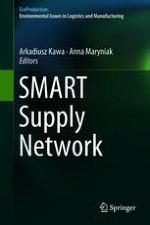2019 | OriginalPaper | Chapter
Losses in Transportation—Importance and Methods of Handling
Authors : Marcin Anholcer, Tomasz Hinc, Arkadiusz Kawa
Published in: SMART Supply Network
Publisher: Springer International Publishing
Activate our intelligent search to find suitable subject content or patents.
Select sections of text to find matching patents with Artificial Intelligence. powered by
Select sections of text to find additional relevant content using AI-assisted search. powered by
